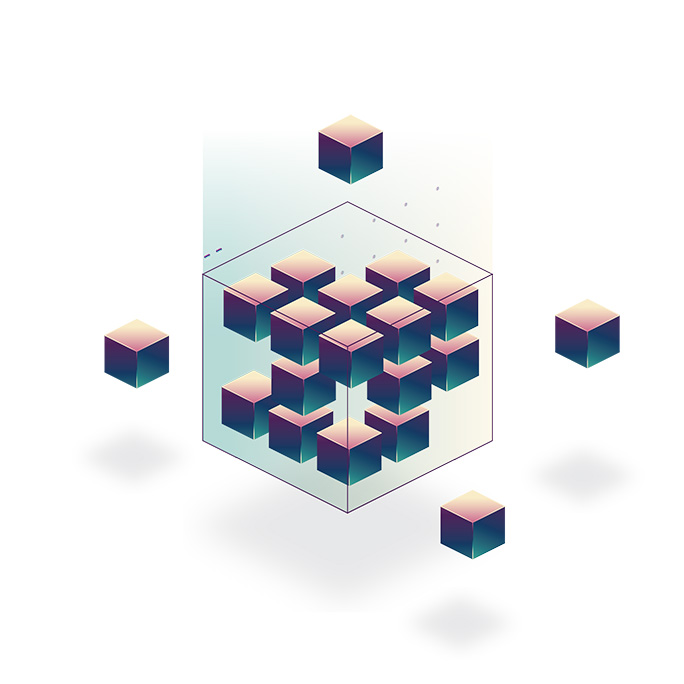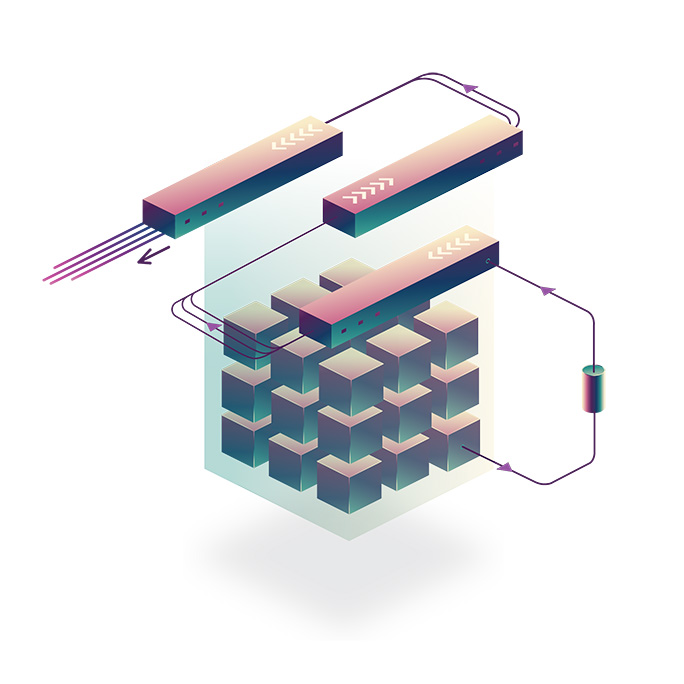
Geospatial Platform
Bring R&D projects to production
One catalog
of science-ready data
Run models
on thousands of compute nodes
No GDAL
unless you want to
Scalable AI and ML modeling backend
Discover, quantify, and operationalize insights from geospatial data
Understand how your business is impacted in real-time by the changing global landscape with access to the highest quality, analytics-ready data and the best tools to leverage it. The Descartes Labs Platform unifies access to the world’s most difficult-to-use data and provides an end-to-end foundation for AI and ML modeling.
The Platform enables rapid, low-latency access to, and on-the-fly manipulation of, petabytes of geospatial data. Utilize hosted cloud computing tools to transition R&D projects into fully scalable, business-driving pipelines.
Product features
Perform groundbreaking analytics at scale
Generate novel insights that drive your business forward with an enterprise-grade geospatial modeling and deployment environment. This robust infrastructure simplifies analysis of global-scale data and provides everything data scientists need in one robust interface.



Powered by AWS
Save time, costs, and get to market faster with the complete toolkit for building scalable geospatial applications—all available on AWS.
What challenges are you facing applying AI & ML to geospatial data?
Fusion of multiple data sets
Vast amounts of available data, and countless ways to access it, can create inefficiencies and misinterpreted information. The Descartes Labs Platform provides access to science-ready data through a single interface, no matter the data type.
Data is complex and difficult to work with
By leveraging our Platform, users can both manage and dive deep into disparate geospatial data investments at scale enabling extensive interrogation of the data, without glossing over the complexities.
Expertise or budget constraints
Accessing data can require extensive engineering and self-managed services to achieve minimal functionality and performance. With a fully-hosted, science-grade geospatial machine learning platform, built for production operations, reliability, and visibility, customers can focus on R&D instead of maintaining infrastructure.
What challenges are you facing applying AI & ML to geospatial data?
Fusion of multiple data sets
There is an enormous amount of data available, and nearly as many ways to access it. The Descartes Labs Platform provides access to science-ready data through a single interface, no matter the data type.
Data is complex and difficult to work with
The best outcomes are driven by enabling deep interrogation of the data, without glossing over the complexities. By leveraging our Platform, users can both manage and dive deep into disparate geospatial data investments at scale.
Expertise or budget constraints
Most paths to accessing the data require extensive engineering and self-managed services to achieve the most minimal functionality and performance. With a fully-hosted, science-grade geospatial machine learning platform, built for production operations, reliability, and visibility, customers can focus on R&D instead of maintaining infrastructure.
Who we serve
Democratize access to your geospatial data
The Platform is an enterprise-grade geospatial modeling and deployment environment that provides everything needed to deploy models at scale.
Technology Leader
Ensure your team is accelerated by technology investments, not burdened by them. Access all the necessary tools and data in one package, no infrastructure hosting required. With visibility into usage, you can understand and project costs as your business expands. With a shared tool and world-class support, your scientists can collaborate more effectively and get the most out the this cutting-edge technology.
Data & Applied Scientists
Focus on your R&D rather than data and engineering by unifying the way you work with any particular data source, be it DEMs, multispectral, aerial, or SAR data. We provide scalable compute infrastructure to run models on thousands of workers with two lines of code and provide powerful tools focused on enabling science-grade modeling of geospatial data.
Head of Geospatial
For many global, highly distributed organizations, imagery investments become increasingly scattered and inaccessible to the stakeholders who most value it. By providing a flexible, data-type-agnostic, and performant index of all your data, we can enable teams worldwide to leverage your investment and deliver it seamlessly into easy-to-use tools.
Highlights
Fully-hosted geospatial machine learning platform
Reduce costs, eliminate engineering roadblocks, and get to market faster.
Rapid
Accelerate R&D and accomplish years of work in just weeks.
Reduce overhead
Decrease infrastructure costs associated with R&D and deliver results for a fraction the costs of a DIY approach.
Faster to market
Reduce time to test & productize and gain an advantage over competitors building in-house solutions
Science-ready
Science-ready data available through a single interface, no matter the data type.
Key Features

Product specs
Get ahead with a science-ready, end-to-end capability
Data
- Access a growing catalog of data.
- Petabyte-scale storage capabilities with user, group, and org-level permissioning. Our catalog natively supports uploading NumPy arrays, Cloud-Optimized GeoTIFFs (COGs), JPEG2000 (JP2), geospatial vector data, and arbitrary blob data.
Modeling
- Dedicated compute resources for large-scale modeling. Up to 1000 parallel workers per pipeline. Workers as large as 16 vCPUs with 120 GB memory.
- Dynamic compute.
- Each user gets a VM with a robust Python environment.
Support and Services
- We work with you to define your needs.
- Everything from help desk to science consulting to data pipeline setup.
Security
- ISO-27001 certified.
All of the power.
None of the engineering.
Talk to an expert to learn how Descartes Labs can grow your business.